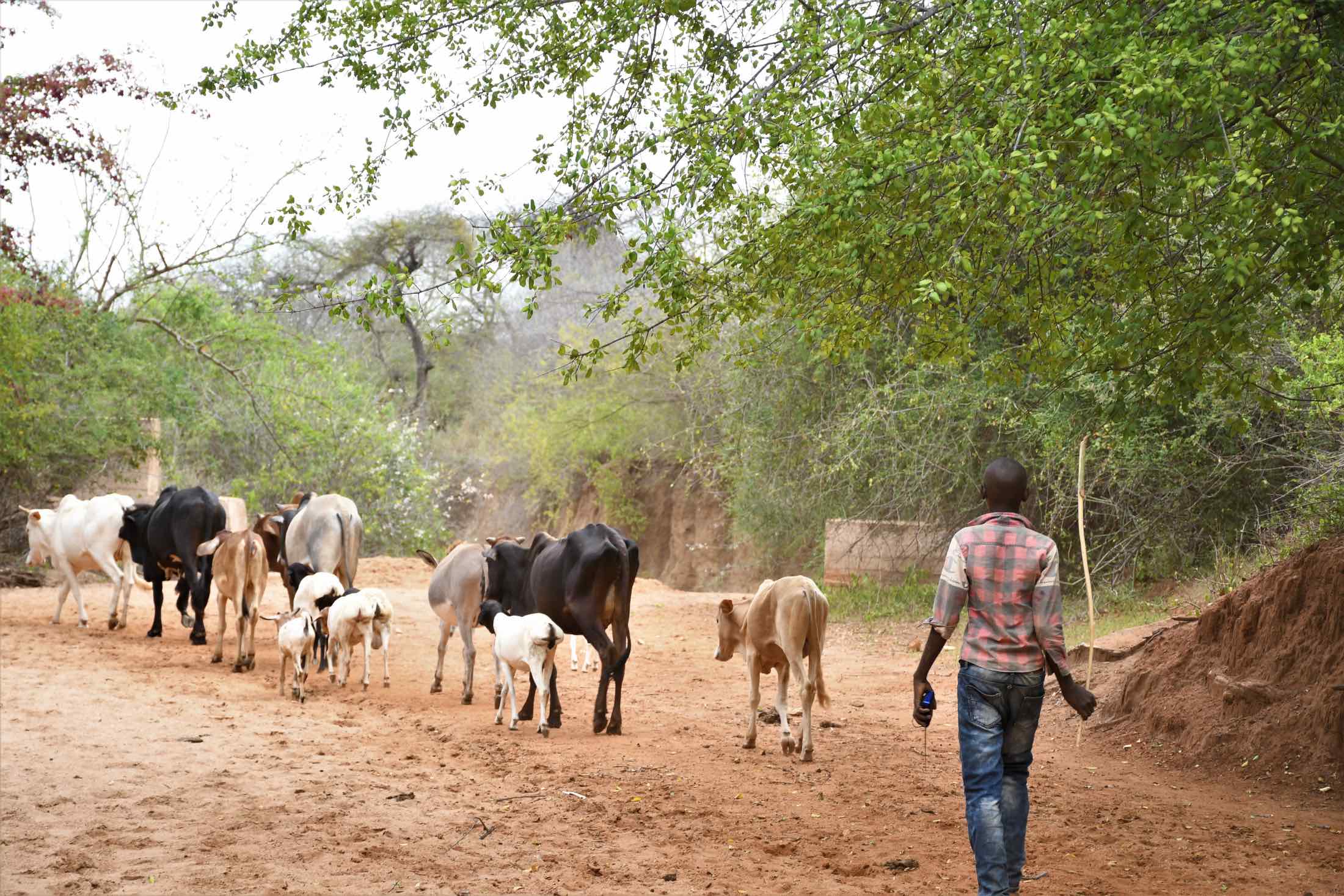Reliable Water for Kanyonga
Our main entry point into Kanyonga Community has been the Wasya wa Athi Self-Help Group, which is comprised of households that are working together to address water and food scarcity in their region. These members will be our hands and feet in both constructing water projects and spreading the message of good hygiene and sanitation to everyone.
The community members have to walk for very long distances to the scoopholes where they fetch water: close to three kilometers. The water drawn from these scoopholes is very salty and is unconducive for direct consumption. In addition, there are usually very long queues at the water point, which consume a lot of time for community members to draw water.
The water crisis has greatly affected the community members of this region.
"The water scarcity has affected me a lot personally," said local mother and farmer, Faith Mbevi (30 years old). "When there is no water, I lack peace of mind because I have to walk for very long distances to fetch water.
"I have small children to look after," Faith continued. "Walking to and from the water sources consumes a lot of my time, and I am often worrying about them whenever I go the river to dig scoopholes for fetching water."
On average, women have to wake up very early at around 6 a.m. or earlier to walk to the nearest water sources to fetch water from scoopholes. Often, they find queues at the water point and they have to wait until it is their turn to fetch water.
Also, the water fetched in the morning is usually inadequate to fulfill all the household uses, such as washing the house, clothes, cooking, and drinking. Therefore, the women have to go back to the river to fetch water for performing their chores throughout the day. They either carry jerrycans on their backs or they ferry them using donkeys.
The area is in semi-arid land that receives little to no rainfall as a result of climate change. The most common livelihood is farming of drought-tolerant crops such as maize, beans, cowpeas, and green grams, among others. The terrain is sloppy and rocky, with dirt roads leading to the villages and locals' homesteads.

Community members have often complained of water diseases such as typhoid, dysentery, and amoeba. Treatment costs have been high because the members have to use their own funds for medication.
Hand-Dug Well
We have supplied the group with the tools needed for excavation. With the guidance of our artisans and mechanics, the excavated well will be cased, sealed with a well pad, and then finished with a new AfriDev pump.
Excavation takes a month or more on average, depending on the nature of the rock beneath. Construction of the well lining and installation of the pump takes 12 days maximum. The well will be lined with a concrete wall including perforations so that once it rains, water will filter in from the sand dam.
This well will bring clean water closer to families.
New Knowledge
These community members currently do their best to practice good hygiene and sanitation, but their severe lack of water has been a big hindrance to reaching their fullest potential.
We will hold hygiene and sanitation training sessions with the Self-Help Group and other community members to teach about important hygiene practices and daily habits to establish at the personal, household, and community level. This training will help to ensure that participants have the knowledge they need to make the most out of their new water point as soon as water is flowing.
One of the most important topics we plan to cover is the handling, storage, and treatment of water. Having a clean water source will be extremely helpful, but it is useless if water gets contaminated by the time it is consumed. We will also emphasize the importance of handwashing.
We and the community strongly believe that all of these components will work together to improve living standards here, which will help to unlock the potential for these community members to live better, healthier lives.
We typically work with self-help groups for 3 to 5 years on multiple water projects. We will conduct follow-up visits and refresher trainings during this period and remain in contact with the group after all of the projects are completed to support their efforts to improve sanitation and hygiene.

 Protected Dug Well
Protected Dug Well
 Rehabilitation Project
Rehabilitation Project


















